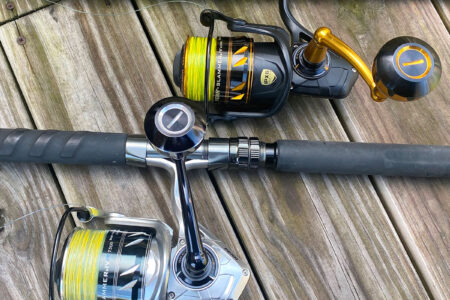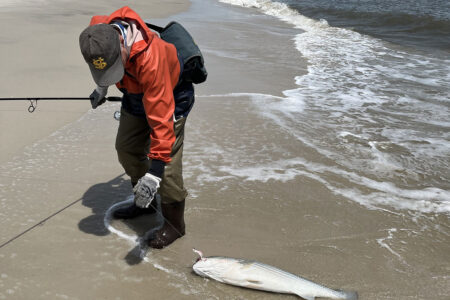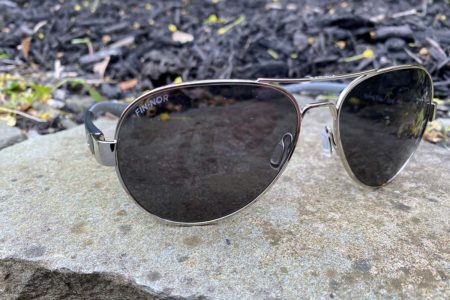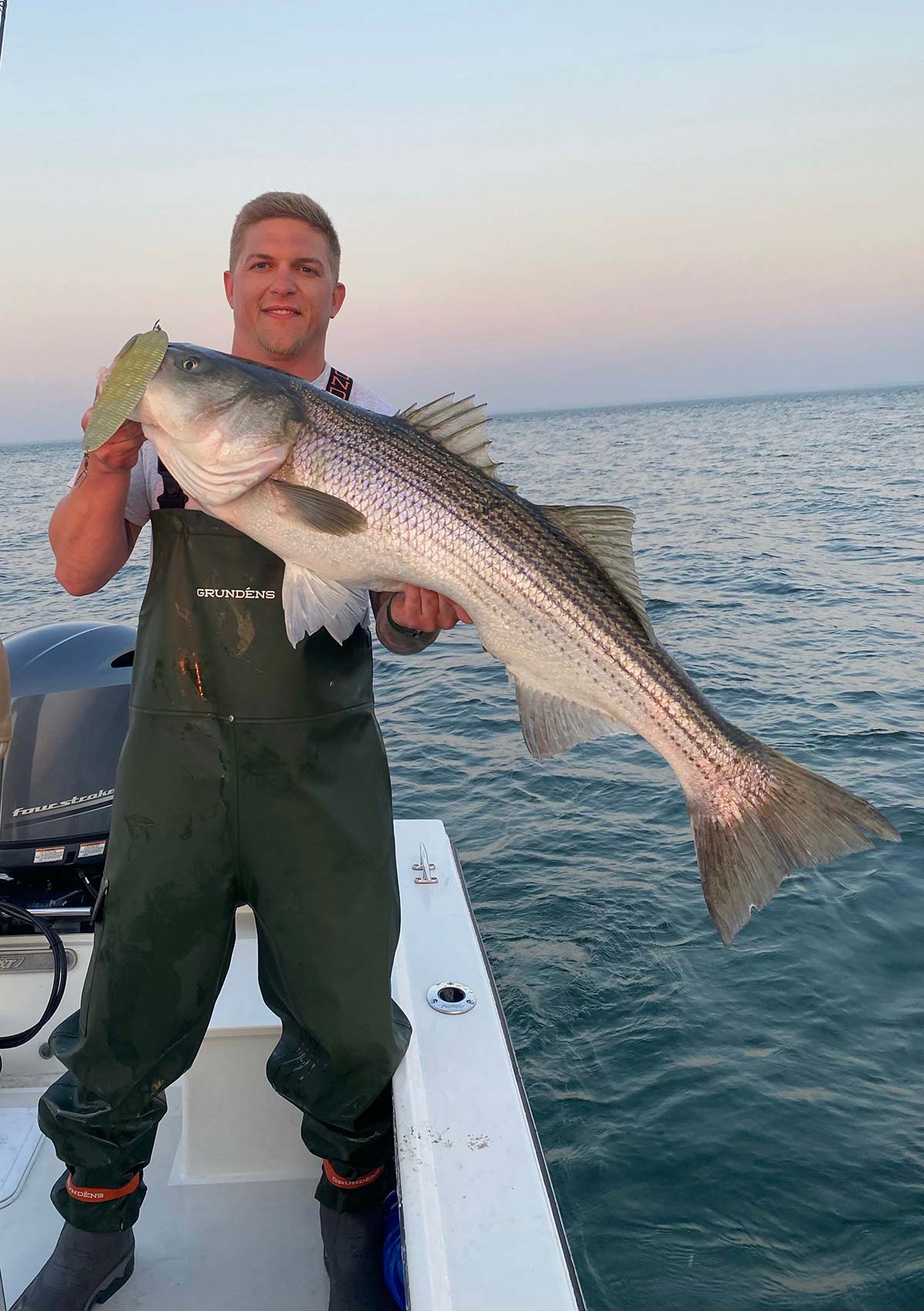
The newest ‘must have’ lure for anyone that hunts trophy inshore striped bass.
If you were on a deep water reef last season in the Western Long Island Sound, odds are high that you saw anglers pumping their rods to the sky and dropping the tip, quickly, back down to the water. Flutter spoons were the hot ticket for targeting big bass last spring. They were so effective, that they began to draw comparisons to another lure that changed striped bass fishing, the Big Doc, in fact, many striper fishermen have since nicknamed the flutter spoon the “underwater Doc”.
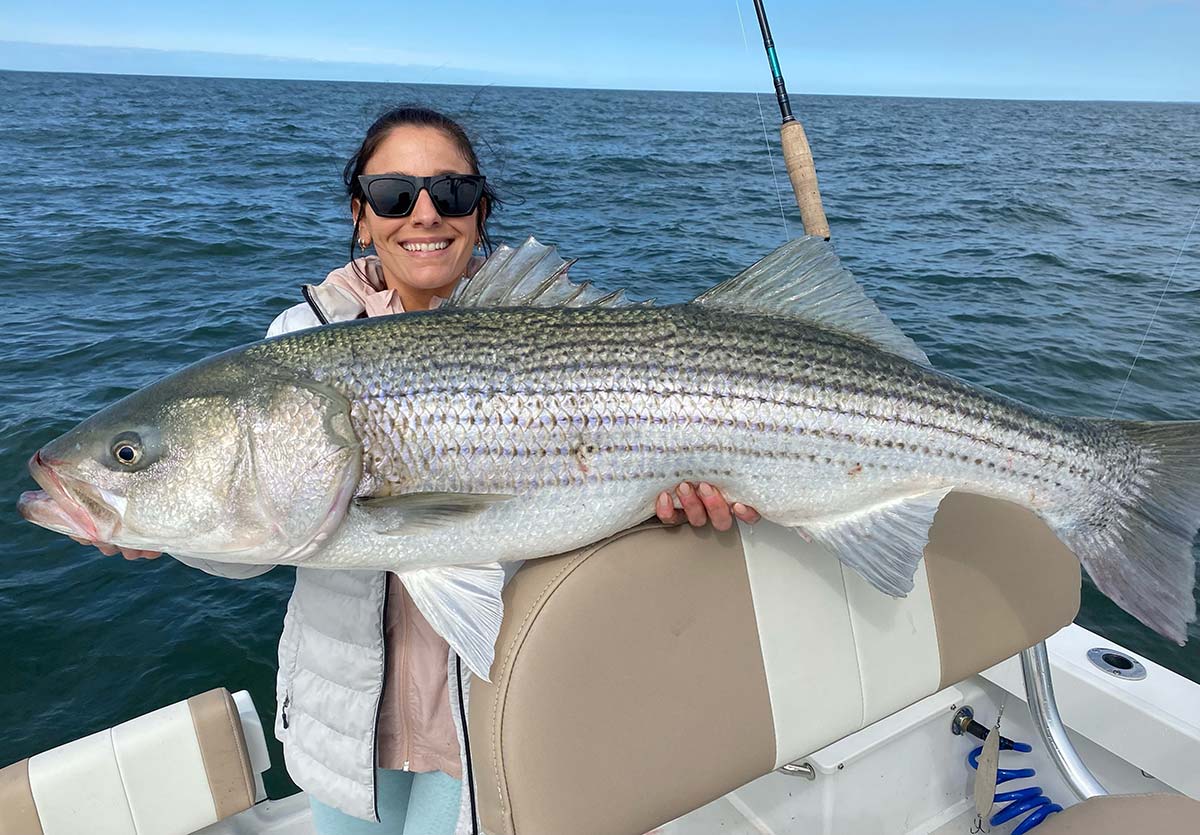
Earn Your Metal
What is a flutter spoon? In very basic terms, it’s a big piece of flattened steel with a 5/0 saltwater grade treble hook attached with a large split ring. These spoons were originally designed for freshwater bass fishermen who were trying to mimic dying shad in early winter. The large spoons flutter and dart at random as they descend through the water column, replicating the erratic movements and flickering flashes of a dying baitfish to a tee. It wasn’t long before saltwater anglers saw the potential of replicating dying bunker, and the results more than speak for themselves. A wounded menhaden falling out of a thick school baitfish is something that a large striped bass will never pass up and these spoons look just like the real thing.
When I first used a flutter spoon, it was at buoy called 11B, a deep water reef located in the middle of the sound between Eaton’s Neck and the Norwalk Islands. This is a prime spot for intercepting big migrating bass as they make north and east into New England after spawning in the Hudson River. It was early May and bass were moving through the Sound in big schools. My sonar lit up like a Christmas tree when I got to the reef. I reached for my rod and reel and dropped the flutter spoon straight down into the school of bass. The spoon got smacked before I could even engage my reel and I was hooked up. That day, I continued to pound bass on the Nichols 9-inch Magnum Flutter Spoon. I knew I was never going to leave the dock without one rigged to my rod and ready to go. It seemed whenever we left the dock we’d see other boats with rods rigged the same way, one with the spoon and the other with the 9-inch Doc.
The 9-inch Nichols Magnum Flutter Spoon Ben Parker Edition was the one that you could find in almost every shop in the Northeast by the end of the 2022 season. Since then, many other companies have joined the mayhem and come out with their own flutter spoons such as Tsunami, Tony Maja, Josh’s Tackle, Jigging World and more. Each spoon has its own unique features along with a wide array of colors and finishes and rigging techniques, as well. One of my favorite designs is the ‘shattered glass silver and gold’ finish available in the Nichols lineup, it’s a perfect color for matching the colors and flash of a dying bunker as it flutters, helplessly, to the bottom.
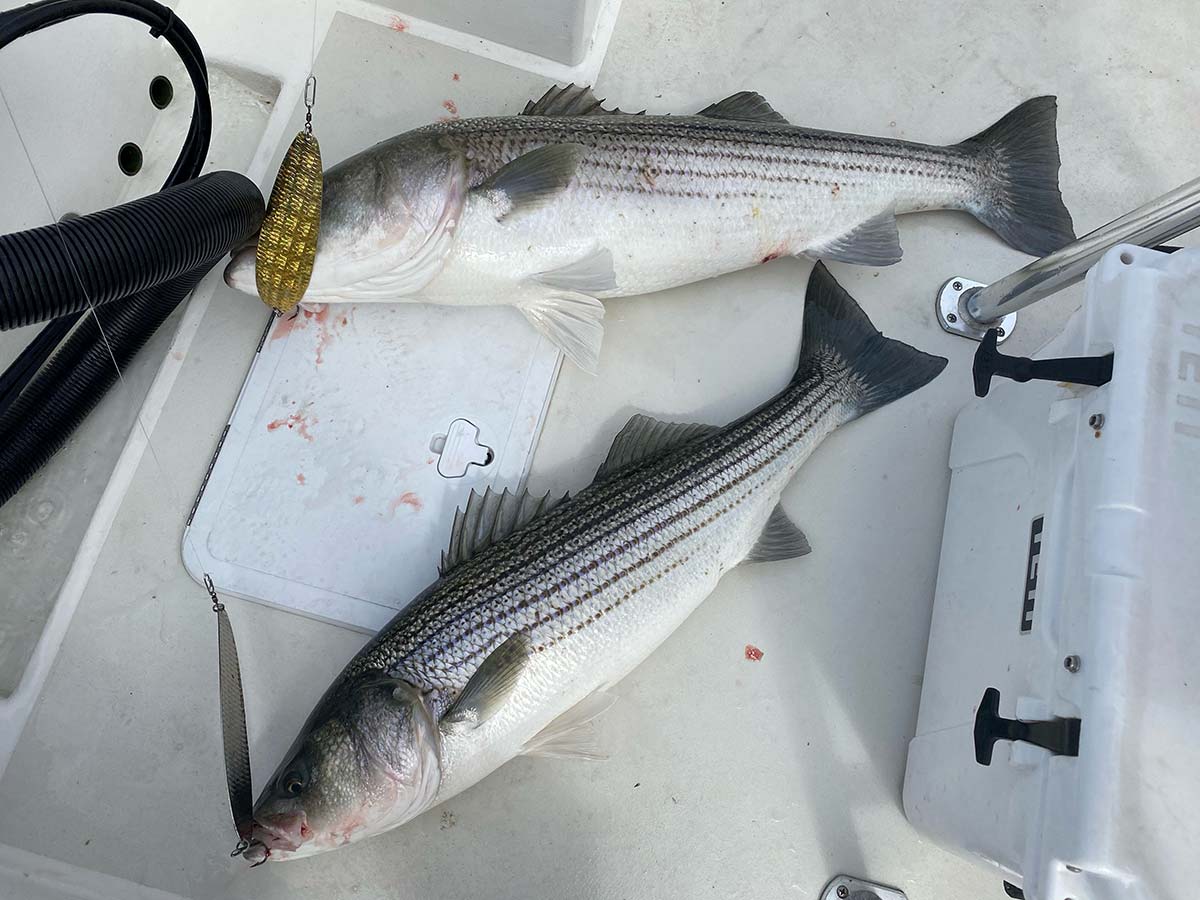
Mastery & Modifications
These spoons work well in many different scenarios but really prove their worth when you’re marking schools of stripers relating to deeper water structure or hanging deep around bunker schools. But anytime you find larger stripers schooled up on the bottom or even suspended in the water column, it’s worth deploying a spoon. I’ll say it again, a dying bunker is an opportunity that striped bass just cannot resist.
Working a flutter spoon is really quite simple. Basically you drop the spoon to the bottom (or the depth where the fish are holding) and pump your rod sharply up to the sky and then immediately drop your rod tip back to the water, allowing the spoon to flutter as it sinks. The trick is that you need to allow slack in your line so that the spoon can sink without resistance, otherwise the spoon won’t flutter. One of the biggest mistakes anglers make when using them is they don’t drop their rod fast enough keeping the line too tight which kills the seductive action of the spoon. The bites come when the spoon is descending back to the bottom so the angler needs to be on alert, looking and feeling for any signs of a strike. The hits are usually hard and jarring, but sometimes they may be as subtle as the spoon seeming to stop mid-descent—always be ready to set the hook!
Once I had a few trips under my belt learned quickly that some hardware upgrades were required because I’d had a few failures when hooked up to big fish. I found that adding a ball bearing swivel between the hook and the spoon was crucial to staying buttoned up to big stripers—I made the change after a few bent-out trebles and dropped fish. The swivel allows the spoon to spin freely during the fight which seem to eliminate the leverage the fish were gaining on the spoon before I made this modification. I like to use the Spro Power Split rings in size 7 and size 2 Spro ball bearing swivels, the rigging sequence is spoon to split ring to swivel to split ring to 5/0 VMC treble hook. Some anglers will also add an assist hook to the top end of the spoon to improve their hook up ratio, you can try this if you feel like you’re missing a lot of short strikes.
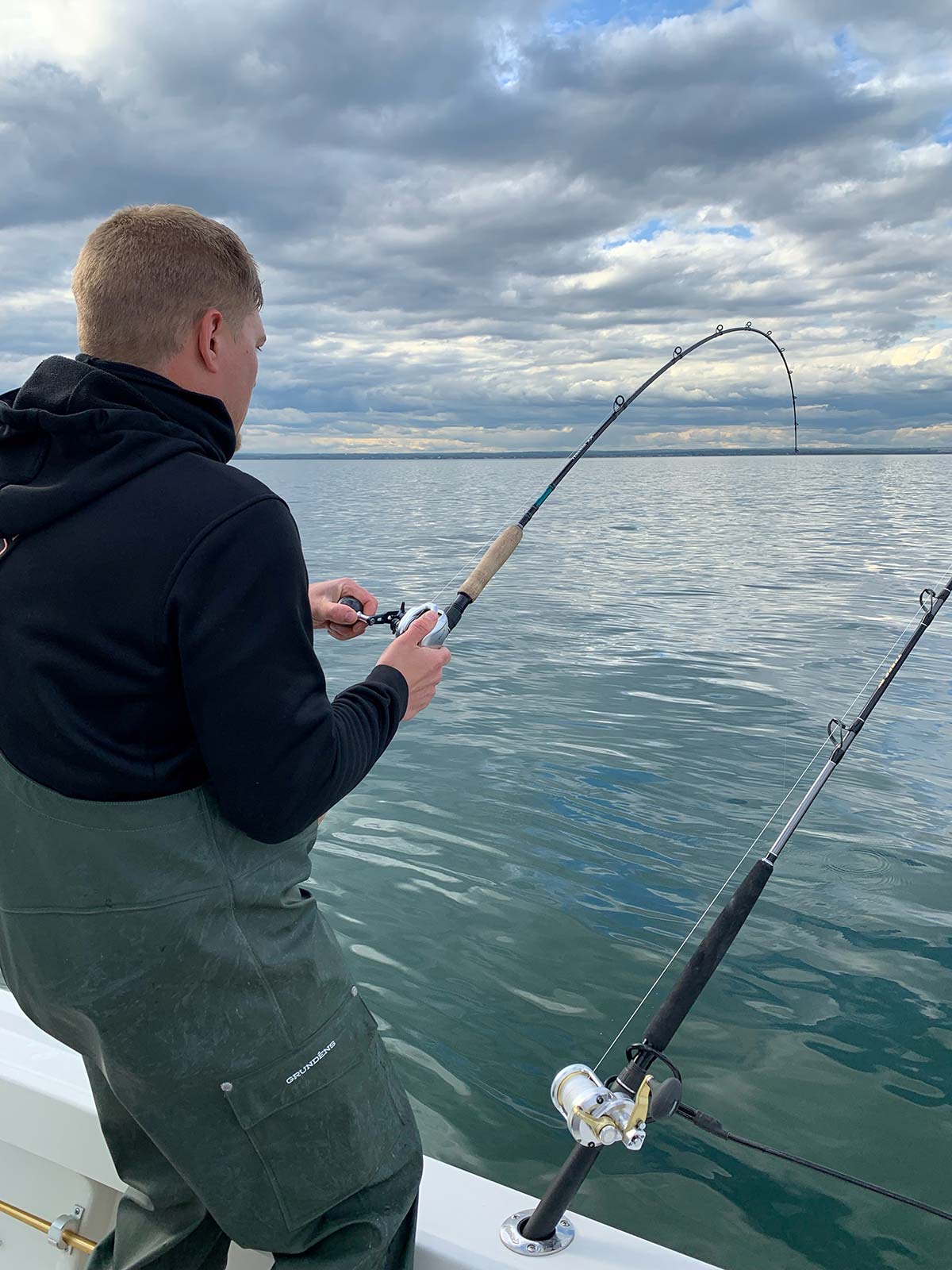
Spooning Tackle
When it comes to equipment, I’m a fan of longer rods, preferably somewhere between 7 and 8 feet, with a moderate-fast taper. A moderate-fast rod helps to absorb a lot of head shakes when fighting trophy fish. You can use spinning reels, conventionals or low profile baitcasters. I prefer a low profile baitcaster such as the Shimano Tranx or Daiwa Lexa in the 300 or 400 size, because of the ease of use. They are quick to deploy and fast to engage if you need to set the hook quickly.
There are many rod manufacturers out there that make suitable sticks for flutter spoons, one that I prefer is the Shimano Teramar XX (TXNC76MH). I like this rod because it is moderate-fast, features a longer butt and a beefy foregrip that helps when fighting big bass. Other popular rods are the G.Loomis 904CMF and Tsunami slow pitch TSSPJC701XH. I prefer a 30- or 40-pound braided line tied to a 50-pound leader to go along with these outfits.
If you are fishing the 2023 spring striper run without a flutter spoon in your arsenal you need to fix that right away. Come visit me at Fisherman’s World in Norwalk, CT or hit up your favorite local tackle shop and stock up. In 2022, these giant spoons stole the spotlight from the Doc, and for good reason. It will remain one of my top techniques for targeting trophy striped bass and it should be one of yours too.
